in Thoreau’s Journal:
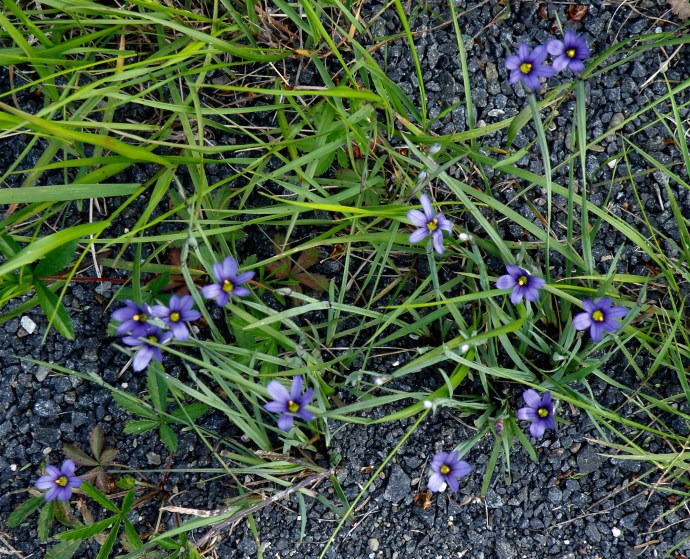
A cold S E wind. Blue-eyed grass ap in pretty good season.

in Thoreau’s Journal:

A cold S E wind. Blue-eyed grass ap in pretty good season.

in Thoreau’s Journal:
The common blue flag––just out at Ball’s Hill….On the meadows are large yellow-green patches of ferns beginning to prevail….Landed at a high lupine bank by Carlisle Bridge. How many such lupine banks are! Whose blue you detect rods off––

in Thoreau’s Journal:
That exceedingly neat & interesting little flower blue-eyed grass now claims our attention. The barrenest pastures wear now a green & luxuriant aspect.

in Thoreau’s Journal:
The bulbous arethusa out a day or two––prob. yesterday….Though in a measure prepared for it still its beauty surprised me––it is by far the highest & richest color yet. Its intense color in the midst of the green meadow made it look 2ce as large as reality. It looks very foreign in the midst of our plants.––
in Thoreau’s Journal:

A new season has commenced–– Summer-– Leafy June-– The buttercups in the churchyard are now in perfection….

Blue eyed grass has been out some time as I judge by the size of its seed vessel.

in Thoreau’s Journal:
The air is full of the odor of apple blossoms–– Yet the air is fresh as from the salt water. The meadow smells sweet as you go along low places in the road at sundown. To night I hear many crickets. They have commenced their song. They bring in the summer.
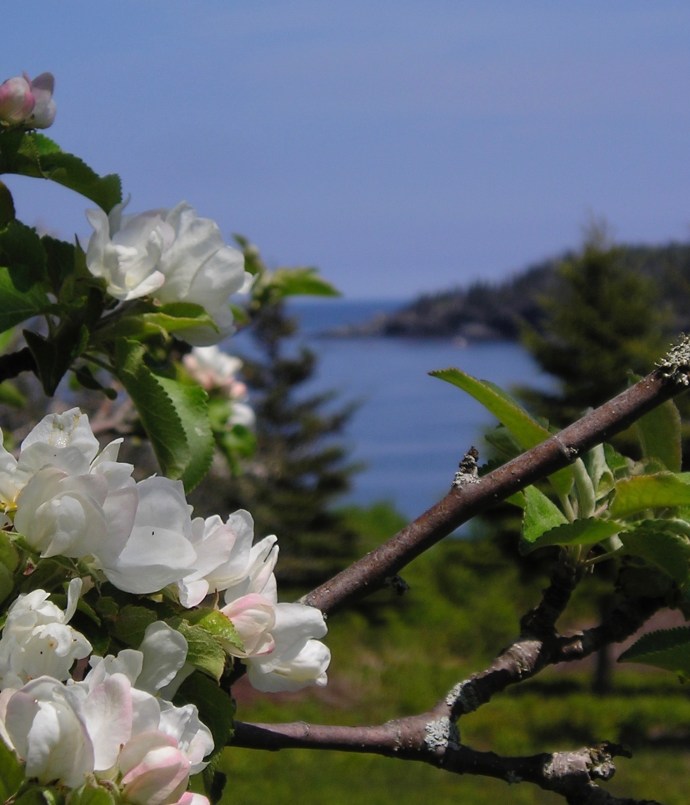
in Thoreau’s Journal:
The true sites for human dwellings are unimproved— They command no price on the market….

A vista where you have the near green horizon contrasted with the distant blue one terrestrial with celestial earth. The prospect of a vast horizon must be accessible in our neighborhood. Where men of enlarged views may be educated.— An unchangeable kind of wealth a real estate—

in Thoreau’s Journal:
A sane & growing man revolutionizes every day. What institutions of man can survive a morning experience?

in Thoreau’s Journal:
This genus so kind to the human race the malus or pyrus—Rosaceae the the family or others say Pomaceae. Its flowers are perhaps the most beautiful of any tree.
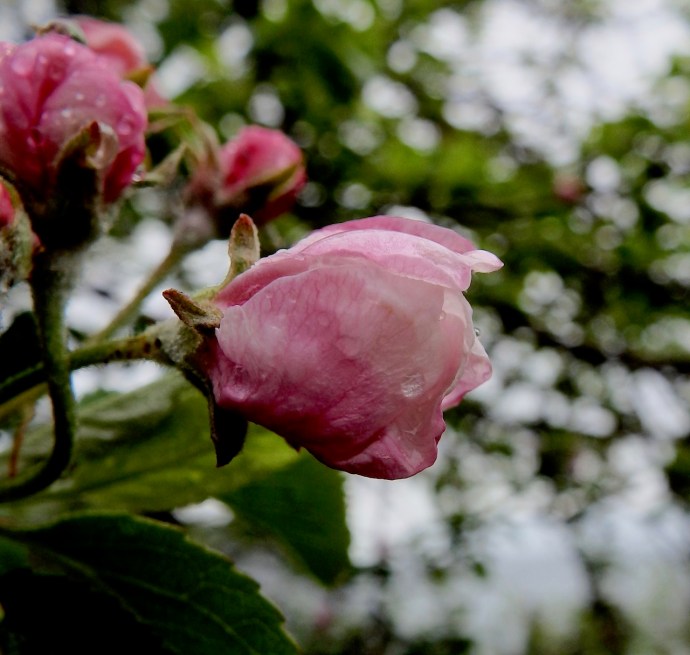
I am frequently compelled to turn & linger by some more than usually beautiful 2/3 expanded blossoms— If such were not so common—its fame would be loud as well as wide. Its most copious & delicious blossoms.
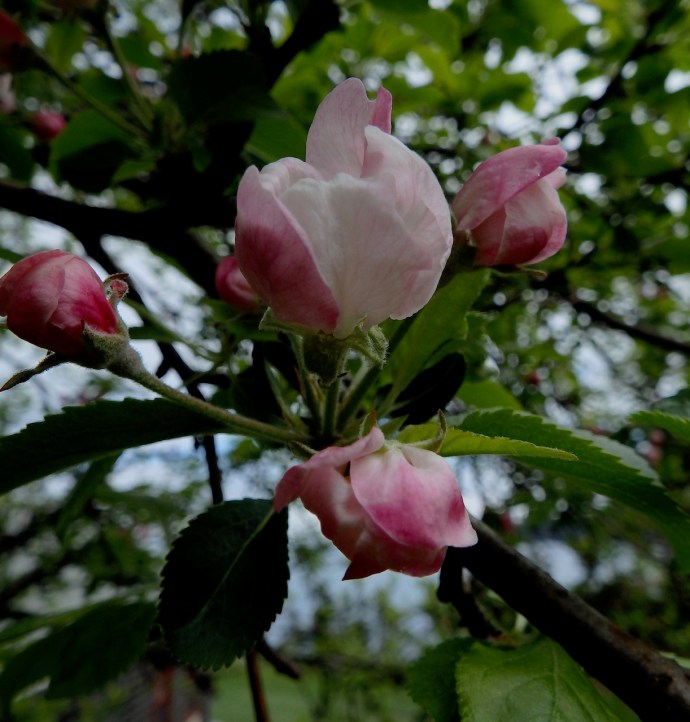
But our wild apple is wild perchance like myself who belong not to the aboriginal race here—but have strayed into the woods from the cultivated stock—where the birds winged thoughts or agents have planted or are planting me. Even these at length furnish hard stocks for the orchard.


in Thoreau’s Journal:
A warm, drizzling day, the tender yellow leafets now generally conspicuous, and contrasted with the almost black evergreens which they have begun to invest. The foliage is never more conspicuously a tender yellow than now. This lasts a week from this date, and then begins to be confounded with the older green. We have had rain for three or four days, and hence the tender foliage is the more yellow.
in Thoreau’s Journal:

The earlier apple trees are in bloom––& resound with the hum of bees of all sizes & other insects. To sit under the 1st apple tree in blossom is to take another step into summer.
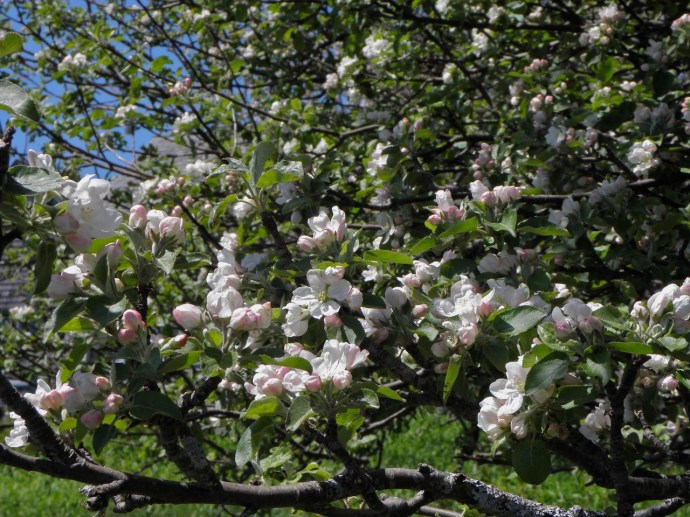
The apple blossoms are so abundant & full––white tinged with red––a rich-scented pomona fragrance––telling of heaps of apples in the autumn––perfectly innocent wholesome & delicious––

in Thoreau’s Journal:
Now is the season of the leafing of the trees & of planting. The fields are white with houstonias, as they will soon be yellow with buttercups. Perchance the beginning of summer may be dated from the fully formed leaves––when dense shade? begins––I will see. High blue berries at length. It is unnecessary to speak of them. All flowers are beautiful. The salix alba is about out of bloom. Pads begin to appear though the river is high over the meadows. A caterpillar’s nest on a wild cherry. Some apple trees in blossom— Most are just ready to burst forth—the leaves being half-formed. I find the fever bush in bloom but apparently its blossoms are now stale. I must observe it next year. They were fresh perhaps a week ago. Currants in bloom by Conants spring—are they natives of America?

A ladies slipper well budded & now white. The v. ovata is of a deep purple blue—is smooth &––pale blue delicately tinged with purple reflections.–– the cucullata is more decidedly blue slaty blue & darkly stained.
The white violets by the spring are rather scarce now. The red oak leaves are very pretty & finely cut about 1 3/4 inches long. Like most young leaves they are turned back around the twig parasol like. The farmers apprehend frosts these nights. A purplish gnaphallium with 3 nerved leaves.
in Thoreau’s Journal:
Found the arum triphyllum & the nodding trillium or wake Robin in Conant’s swamp.
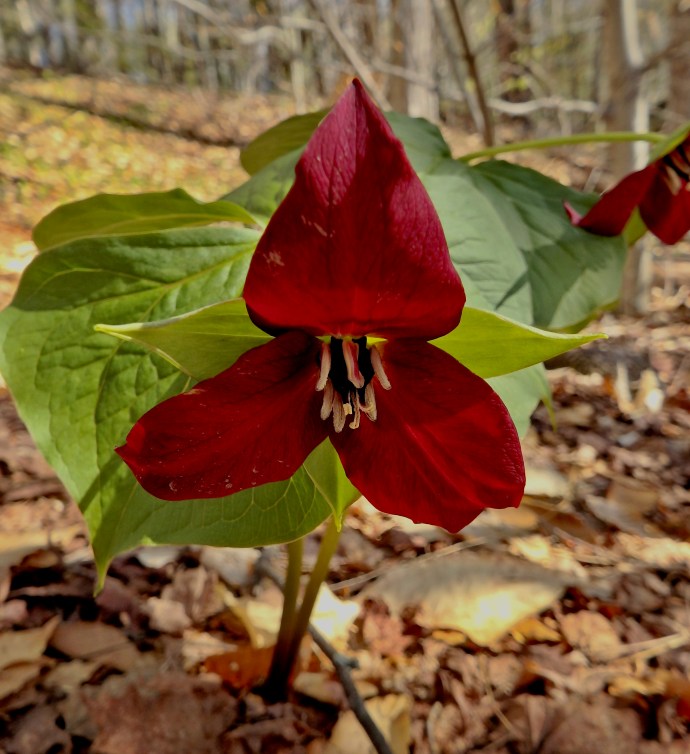
An ash also in bloom there—& the sassafras quite striking—

Also the Fringed Polygala by Conantum wood.
[Photos: Trillium erectum and Polygala paucifolia]

in Thoreau’s Journal:
The Rhodora in blossom—a delicate colored flower.

in Thoreau’s Journal:
In the case of the early aspen you could almost see the leaves expand and acquire a darker green––this to be said the 12th or 13th or 14th––under the influence of the sun and genial atmosphere. Now they are only as big as a nine pence, to-morrow or sooner they are as big as a pistareen, and the next day they are as big as a dollar. This from its far greater prevalence than the aspens, balm-of-Gilead, white maples, etc., is the first to give the woodlands anywhere generally a (fresh) green aspect. It is the first to clothe large tracts of deciduous woodlands with green, and perchance it marks an epoch in the season, the transition decidedly and generally from bare twigs to leaves. When the birches have put on their green sacks, then a new season has come. The light reflected from their tender yellowish green is like sunlight.

in Thoreau’s Journal:
Yesterday when the blossoms of the Golden Willow began to fall—the blossoms of the apple began to open….It is a splendid day—so clear & bright & fresh—the warmth of the air & the bright tender verdure putting forth on all sides make an impression of luxuriance & genialness—so perfectly fresh & uncankered. A sweet scent fills the air from the expanding leafets or some other source— The earth is all fragrant as one flower & bobolinks tinkle in the air. Nature is perfectly genial to man.

in Thoreau’s Journal:
Trees generally are now bursting into leaf. The aspect of oak and other woods at a distance is somewhat like that of a very thick & reddish or yellowish mist about the evergreens— In other directions the light graceful—& more distinct yellowish green forms of birches are seen—& in swamps the reddish or reddish brown crescents of the red maple tops—now covered with keys— Oak leaves are as big as mouse ear & farmers are busy planting.

in Thoreau’s Journal:
The shad blossom…a very beautiful delicate flower….with its purplish stipules & delicate drooping white blossoms— — So large & graceful a tree or bush—

The shad blossom days in the woods.

in Thoreau’s Journal:
I have seen a little blue moth a long time. My thick sack is too much yesterday & today. The golden robin makes me think of a thinner coat.
You must be logged in to post a comment.